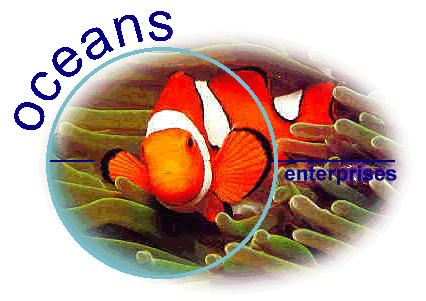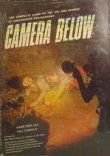 |
CAMERA BELOW
The Complete Guide to The Art and Science of Underwater
Photography.
Hank Frey and Paul Tzimoulis. Foreword by Rear
Admiral Edward C. Stephan, U.S.N. Association Press, New York, 1970
(second printing). Hardcover, dust jacket, 224 pages.
Blurb "The most complete work on underwater photography
ever published. Camera Below is considered by experts to be the most suitable
modern text for classroom instruction, as well as for self learning."
Part One: The Environment, The Denser Atmosphere, Light
Under Water. Part Two: The Equipment, Commercial Equipment, Do-It-Yourself
Equipment. Part Three: The Techniques, Underwater Snapshots,
Available Light Photography, Flash Photography, Composition and Subjects,
Movie Photography, Photo Competitions and Film Festivals. [ps-no dj] |
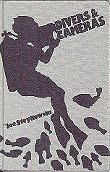 |
DIVERS AND CAMERAS
Joe Strykowski
Copyright 1974 by author. Published by Dacor Corporation,
Illinois, USA.
Hardcover, no dustjacket, 212 pages, mono photographs
and drawings throughout.
One of the better books on underwater photography; well
laid out and interesting, and still of value to the photographer of today.
[ps] |
 |
GUIDE TO UNDERWATER PHOTOGRAPHY
Dimitri Rebikoff and Paul Cherney.
First published in 1955 by Chilton Company, Philadelphia
and New York. Softcover, 118 pages, mono plates.
Rebikoff, in particular, is well known for his pioneering
work on underwater photography. This must be one of the earliest modern
books on the subject. One of the 'Modern Camera Guide Series'. Softcover,
118pages, many mono prints. Covers a range of interesting camera housings
of the day, contemporary lighting systems, and techniques. A true collectors
item. [ps] |
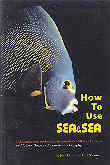 |
HOW TO USE SEA AND SEA
Including Lenses, Strobes and Accessories for Nikonos
Cameras, and a Basic Guide to Underwater Photography.
Joe Liburdi and Cara Sherman.
Orcas Publications, Californiaa, 1988. Softcover, 118
pages, index, glossary, full colour.
The Sea and Sea system was not taken too seriously by
the 'profesional' or serious underwater photographer but that did not diminish
its value as it was a great introduction to the activity at a reasonable
cost. And even dedicated Nikonos users, such as myself, used Sea and Sea
accessories. The book was a useful guide and will retain an interest to
collectors simply because of the equipment that it describes - and maybe
for sentimental reasons for those who used the equipment. |
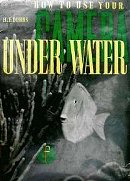 |
HOW TO USE YOUR CAMERA UNDER WATER
A Practical Guide to Underwater Photography.
Horace Dobbs
Focal Press London & New York, 1962.
Second Edition 1972. Third edition 1976.
 |
Hardcover with dust jacket; 187 pages.
Contents.... Choosing a camera, Underwater camera cases,
Underwater housings, Film, Focusing, Filters, Exposure, Additional lighting,
In the darkroom, Skin diving techniques, and more.
First edition cover far left; second and third edition
left with circle.
From the fly of the thir edition: "Horace Dobbs, B.Sc.,
Ph.D., first started, diving in 1957 and since then has led underwater
photographic expeditions to many parts of the world. He formed the Oxford
Underwater Research Group and the film entitled "Neptune's Needle" which
he made with the group for BBC TV won a gold medal at the first International
Underwater Film Festival in Brighton in 1965. He is now National Films
and Photographic Offtcer of the British Sub Aqua Club 'and is establishing
what promises to be the biggest film library on the subject in the world.
His ability to explain technical subjects clearly has been apparent on
radio and television. In this third revised edition of his famous book
the reader will find practical details on how to get the best results with
his camera in the fascinating undersea world, and he will discover how
to make (or how to buy) an underwater camera housing to suit his own particular
camera. The tempting pictorial examples and clear diagrams will put anybody,
with however little knowledge of diving or photography, well on the road
to success in a world all of its own-and with every promise of challenge,
wonder and beauty. "
[ps-1,2,3] |
|
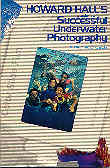 |
HOWARD HALL'S GUIDE TO SUCCESSFUL
UNDERWATER PHOTOGRAPHY - A NEW APPROACH
Howard Hall. Marcor Publishing, California. First printing
1982, then 1985, 1987.
Published by: Marcor Publishing, Port Hueneme, USA in
1985
Card back with illustrated covers; 189 printed pages.
Dimensions: 23 cms tall by 15.5 cms wide.
Note: The three editions have basically the same cover
design where only the colour photo is different: 1882 ?; 1985 diver with
manta ray; 1987 group of kids underwater.
The book is described as “a new approach” and, in the
introduction, Ron & Valerie Taylor say the methods of taking underwater
photographs described in the book are in language that is clear, to the
point and easily understood. It is divided into 12 chapters:
“Introduction: A New Approach”, “Fundamental Photographic
Principles”, “What Happens to Light Underwater”, “Available Light Photographs”,
“Silhouette Photographs”, “Extension Tube Photographs”, “Reflex Macro Photography”,
“Marine Wildlife Portraits”, “Photographing People”, “Close Focus, Wide
Angle Photos”, “Nikonos 35mm and 28mm Lenses” and “Selling Underwater Photographs”.
At the back there is what is described as an “Equipment
Appendix” where the author explains and describes equipment used in underwater
photography. There are many colour photographs (presumably by the author)
and the illustrations are drawn by Michael Farley. On the back are three
comments by eminent people in the diving world. I’ve already mentioned
Ron & Valerie Taylor but there are also comments by Stan Waterman and
Marty Snyderman. [pt]
There were quite a few underwater photography books released
in the 1980s and 90s, due in part no doubt to the development of the Nikonos
System which allowed the diver to take good photographs without the expense
of a n SLR in a housing. Howard Hall's excellent book was not by
any means restricted to the Nikonos system, and indeed it complimemted
the 'how-to' type of basic underwater instruction books available because
its content assumed a basic understanding of the use of an underwater camera.
Hall concentrated on the taking of an acceptable photograph, looking at
the fundamentals of light and composition. The majority of the book concerns
itself with specific images where he describes how the photograph was taken.
Hall has always seen underwater photography as a creative art, more than
just capturing a 'pretty picture' of the traditional 'girl behind gorgonia'.
As many would know, he has moved into cinematography in a big way and is
frequently credited for images in nature television series. The book is
probably one of the few underwayer photography books of the era that is
still relevant to day with the use of digital equipment, and as such well
deserves to be categorised as a classic dive book despite its recent age.
[ps] |
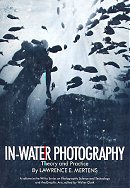 |
IN-WATER PHOTOGRAPHY
Theory and Practice.
Lawrence E. Mertens.
A volume in the Wiley Series on Photographic Science
and Technology and the Graphic Arts, editied by Walter Clark. |
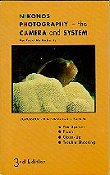 |
NIKONOS PHOTOGRAPHY - THE
CAMERA AND SYSTEM
Handbook for Nikonos I, II, III.
Fred M. Roberts.
First edition 1971, then 1974, 1977. Publsihed by Aqua-Craft
Inc, California.
Softcover, 160 pages, mono photographs and drawingss
throughout, colour plates.(I understand that a hardcover edition was also
available, but I have only ever seen the softcover).
Certainly the most important and probably most ussed
book on the Nikonos system and general underwater photography until Jim
and Cathy Church came on the scene with Beginning Underwater Photography
in 1980. (And even then, I think the Roberts book was better). The first
edition of this book could well become a collectors item. [ps] |
|
PHOTOGRAPHS UNDERWATER
Bob Kendall.
ICER Press , Laguna Beach, California, 1976. ISBN:
9780914704027
Hardcover, 104,p, many illustrations. |
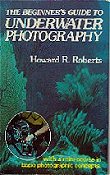 |
THE BEGINNERS GUIDE TO
UNDERWATER PHOTOGRAPHY
Howard R. Roberts.
Copyright 1978 by the author.
Published by David McKay Company, Inc. New York.
Hardcover, dust jacket, 150 pages, mono photographs and
drawings throughout.
This was an excellent book in its day and even today
there is much to be gained from it, particcularly if you have a Nikonos
up to model III.
[ps] |
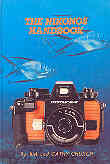 |
THE NIKONOS HANDBOOK
Jim and Cathy Church. Published by the authors, Gilroy,
California, 1986.
Hardcover (laminated boards), 162 pages, mono and colour
prints.
This was the quintessential book for anyone using a Nikonos
V and the IV-A (although why anyone would want to use the latter astounds
me). The 'five' gave us a camera that the professional could use and even
the David Doubilets of the world took down a five: great interchangeable
lenses, accurate metering, and a sturdy construction. I have no idea how
many of the Vs were sold as compared to the other medels but it was certainly
the most popular of the Nikonos series, and remembered with great affection
by those who moved on to the very expensive RS, and later into digital.
Apart from the book being a fundamental instruction manual, it delved into
composition and the maintenance section preserved the sanity of many a
photographer who had a problem whilst on a live-aboard trip.A great book
by the doyen of underwater photography instruction at the time. |
 |
UNDER THE SEA WITH HELMET AND CAMERA
Felix DuPont .
1940. |
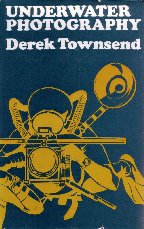 |
UNDEWRWATER PHOTOGRAPHY
Derek Townsend
Published by: George Allen & Unwin, Museum Street,
London in 1963, then 1971.
Blue hard back covers with dustjacket; 152 printed pages.
Dimensions: 22.5 cms tall by 14.5 cms wide.
This 1971 edition (as shown) of the book first published
in 1963 it is claimed has been “completely revised and updated”.
The book takes the reader from the history of U/W photography to choosing
the right camera, accessories, films and filters. Illustrated with
8 monochrome photographs and 8 line drawings, the book is divided into
12 chapters: “How It All Started”, “Choosing the Right Camera”, “All About
Housings”, “Colour and Monochrome Films”, “Filters and Better Results”,
“Simple Underwater Optics”, “Additional Lighting”, “World Gazetteer of
Underwater Conditions – Oceans and Locations”, “A Glossary of Photographic
Terms”, “Equipment for the First Dive”, “Safety Precautions and Diving
Clubs” and “A Glossary of Diving Terms”. How things have changed with the
new more modern digital equipment! [pt] |
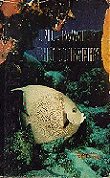 |
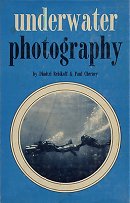 |
UNDERWATER PHOTOGRAPHY
Dimitri Rebikoff and Paul Cherney.
Copyright 1965, 1975. First edition possibly 1965, second
edition 1975, Amphoto, New York.
Harcover, dust jacket, 142 pages, mono photographs throughout,
several colour plates.
Rebikoff is a pioneer of underwater photography. Covers
the usual equipment and techniques, but also photogrammetry, underwater
vehicles, movies and TV, archaeology. Still a valuable book for its content.
[ps-farl] |
|
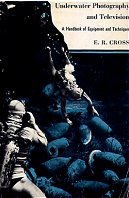 |
UNDERWATER PHOTOGRAPHY AND
TELEVISION.
A Handbook of Equipment and Techniques
E.R.Cross. |
 |
UNDERWATER PHOTOGRAPHY
FOR EVERYONE
Flip Schulke.
Prentice-Hall, Englewood Cliffs, N.J.,USA. 1978
ISBN: 9780139364501
Hardcover, dustjacket, 220 pp., 16 leaves of colour plus
many mono photographs and drawings.
Would have been an excellent manual in iots day. For
both housed cameras and the Nikonos system. [ps] |
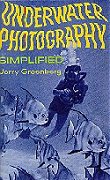 |
UNDERWATER PHOTOGRAPHY
SIMPLIFIED
Jerry Greenberg.
First edition Januray 1956. Fifth edition, possibly the
last, 1971, published by Seahawk Press, Florida.
Softcover, 48 pages, mono photos throughout.
The first edition of this small guide would be a valuable
collectors item - subsequent editions have no real value. It would have
been a handy guide in its day, but why one would bother to photograph the
‘death of a reef marauder', a harmless reef shark, beats me. Only housed
cameras are mentioned. I could find no reference to the Nikonos system
in my 1971 fifth edition, even though the Calypso-Phot was came out in
1959, the Nikonos (I) in 1963, and Nikonos II in 1968.
[ps] |
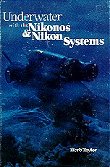 |
UNDERWATER WITH THE NIKONOS
AND NIKON SYSTEMS
Herb Taylor.
First published 1977, Amphoto, New York.
Hardcover, dust jacket, 160 pages, mono prints throughout,
12 colour plates.
Covers the Nikonos II and III, and one chapter on housings.
Despite being more than a quarter of a century old, this is a still a valuable
reference as the Nikonos II and III are still used as they were rugged,
reliable and able to be maintained after a dunking. And the magnificent
15mm lens is still sought after and used by the top photographers. Covers
virtually all you need to know to take underwater photographs with the
Nikon gear. Nothing on history other than a brief mention of the Calypso-Phot
as expected. [ps]
From the fly:
More than a camera manual, Underwater with the Nikonos
and Nikon Systems is a practical guide to underwater photography with the
cameras most often taken below the water's surface. From the original Calypso
to the Nikonos III, the amphibious system that made underwater photography
a reality for the sport diver is explained in detail. And for ttte diver
who wants the advantages of a full-range single-lens reflex system, methods
for taking the Nikon family of land cameras underwater are also discussed,
In addition to cameras, lenses, and housings, all the auxiliary equipment
necessary for making successful underwater pictures is covered: electronic
flash units, flashbulb units, close-up lenses, extension tubes, light meters,
connectors, arms and brackets, and more. Mr. Taylor also provides information
on transporting your equipment easily and safely, tips on periodic maintenance,
and solid advice on the techniques of underwater photography. Woven throughout
the book are practical bits of information that will help the novice to
get results and the advanced photographer to improve his skills. With the
equipment mentioned and the advice within, taking pictures underwater will
become almost as easy as taking pictures in air. |















